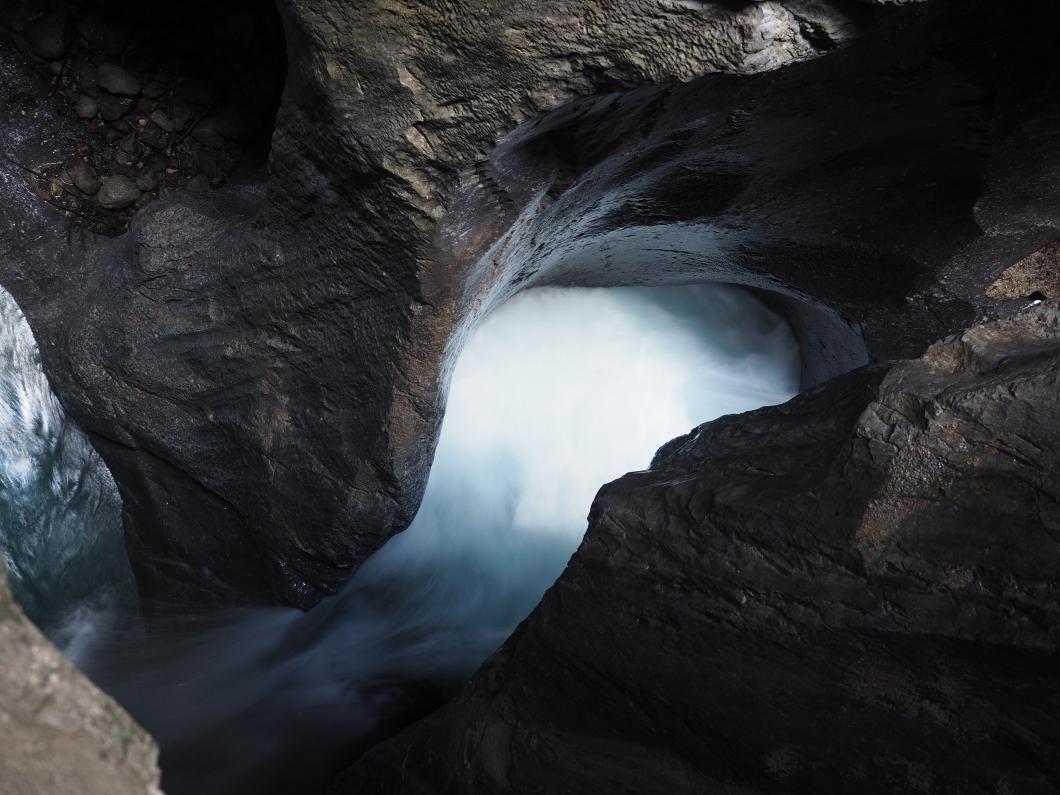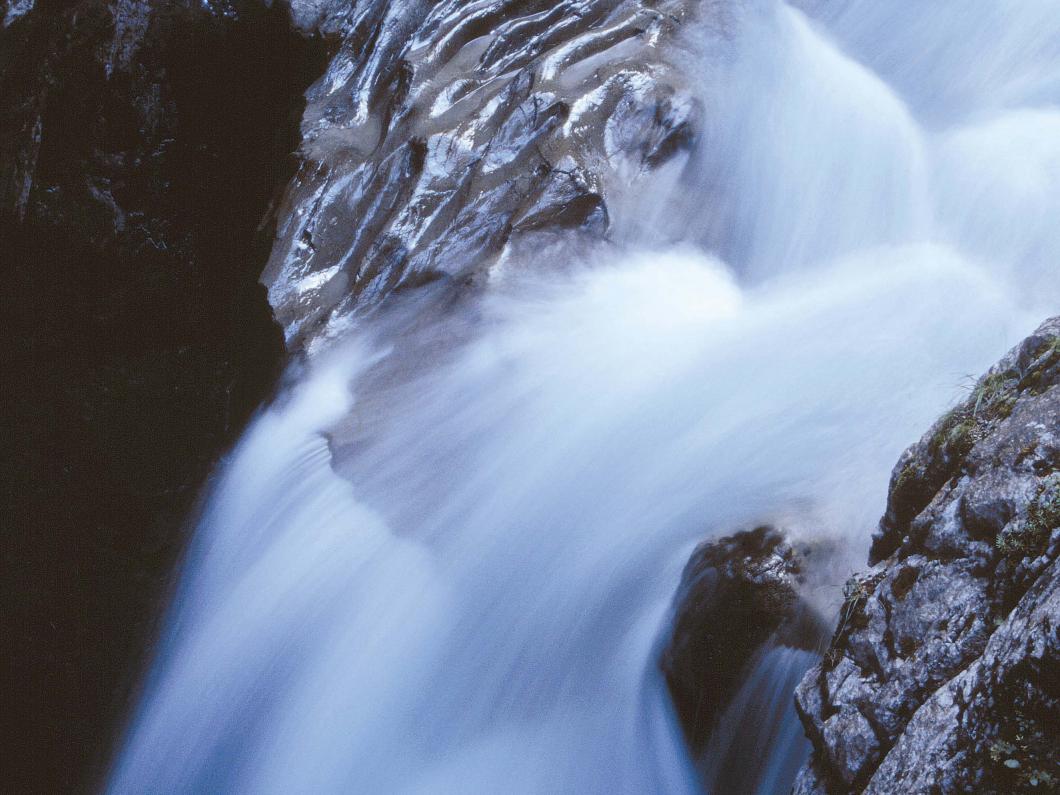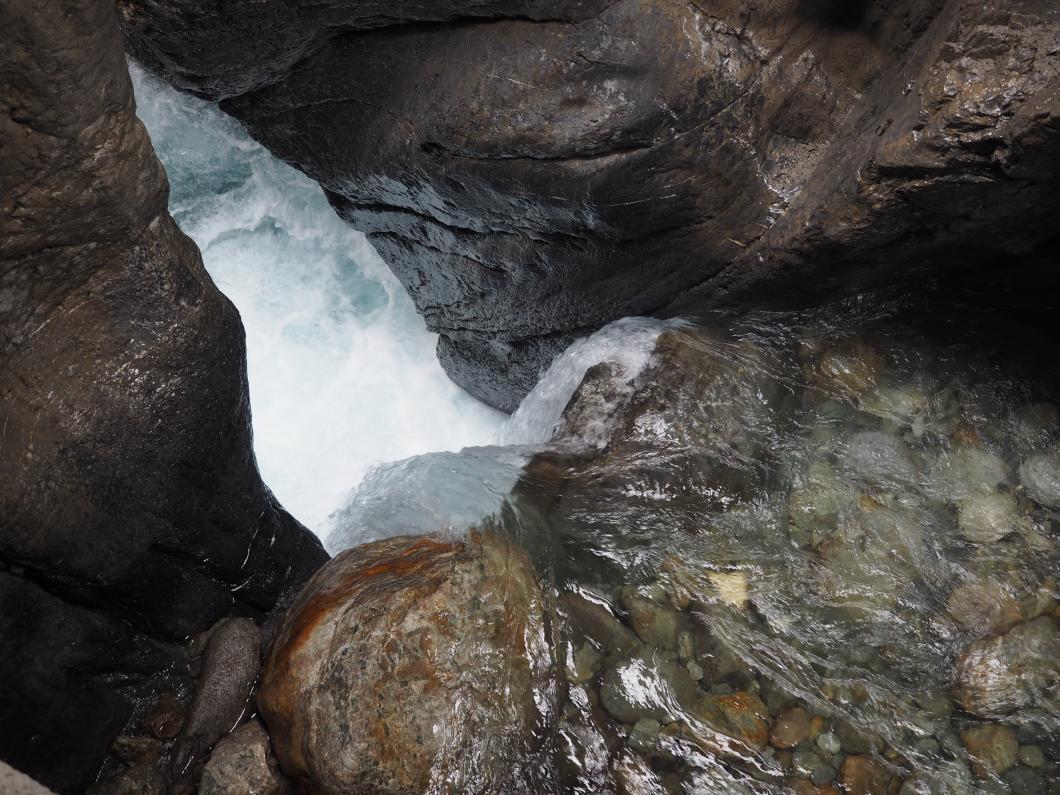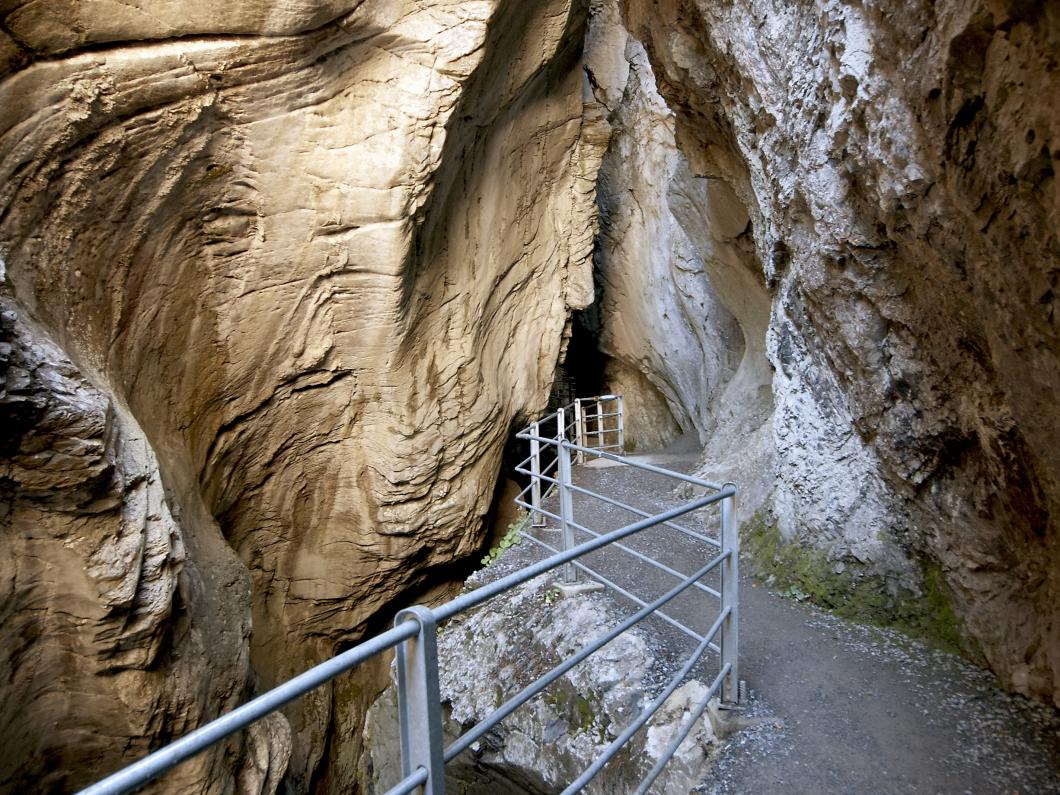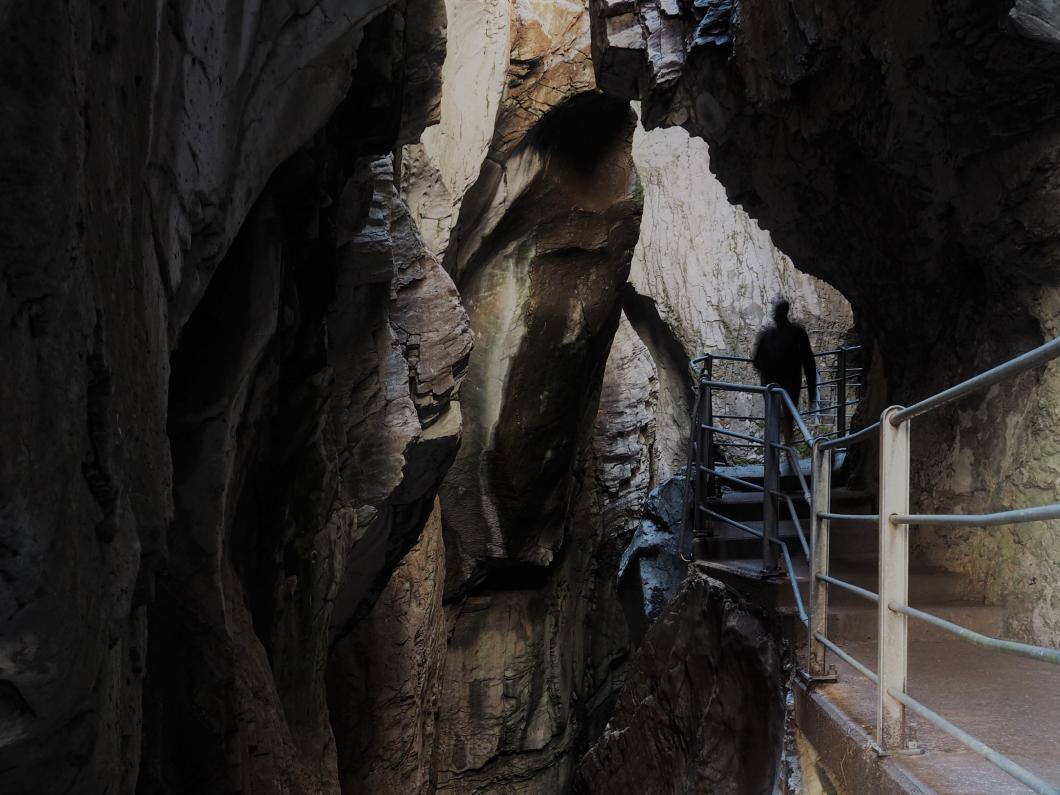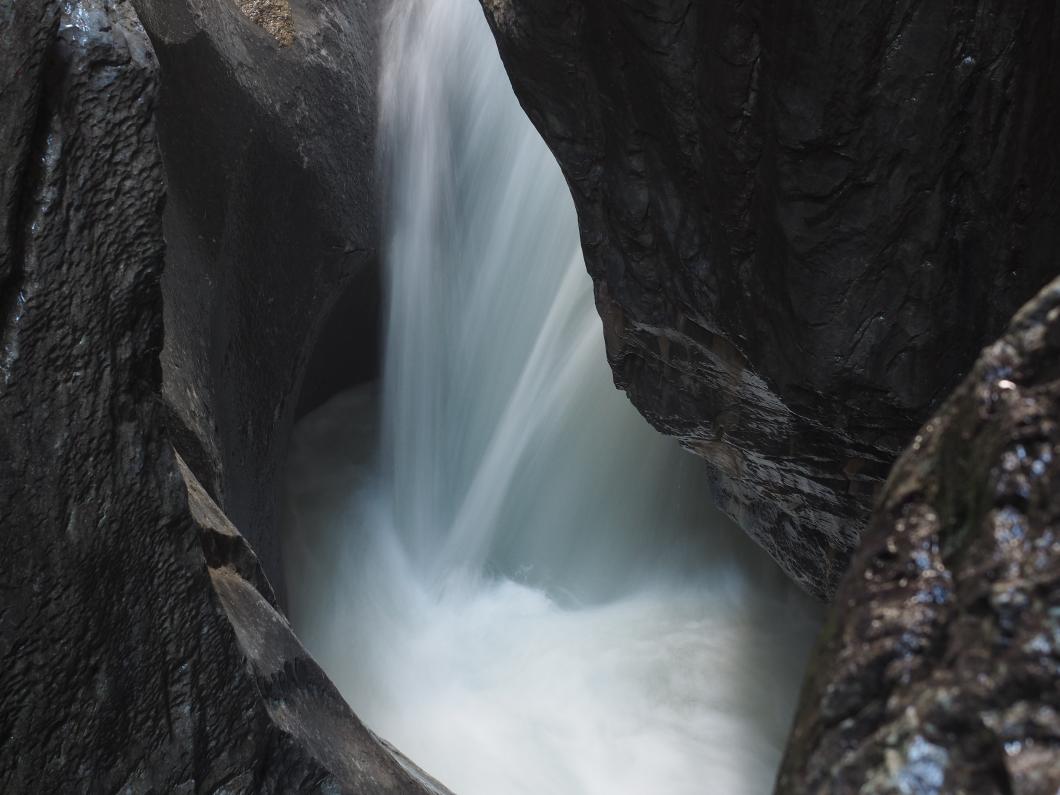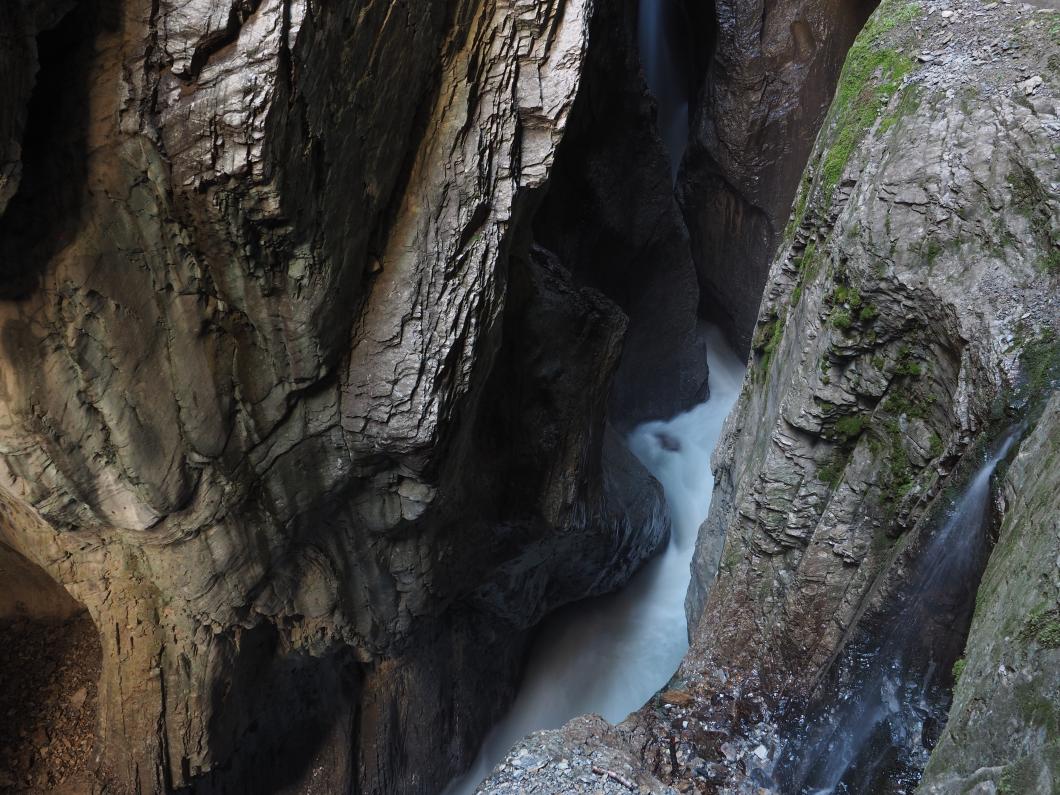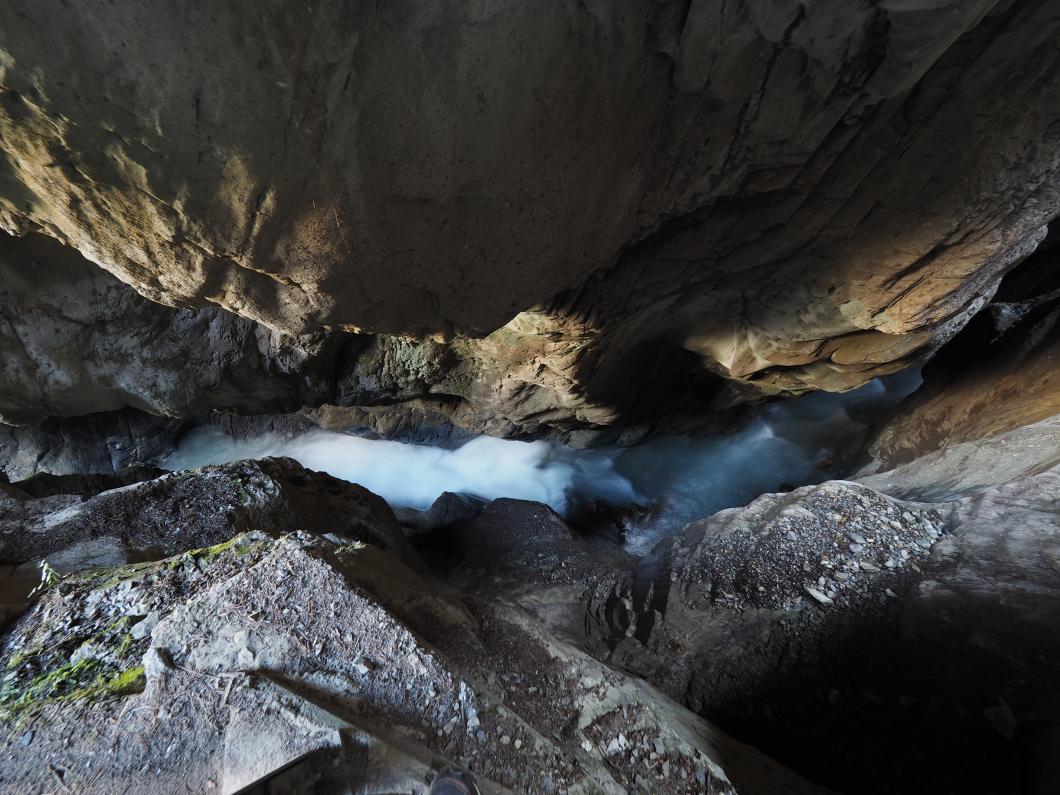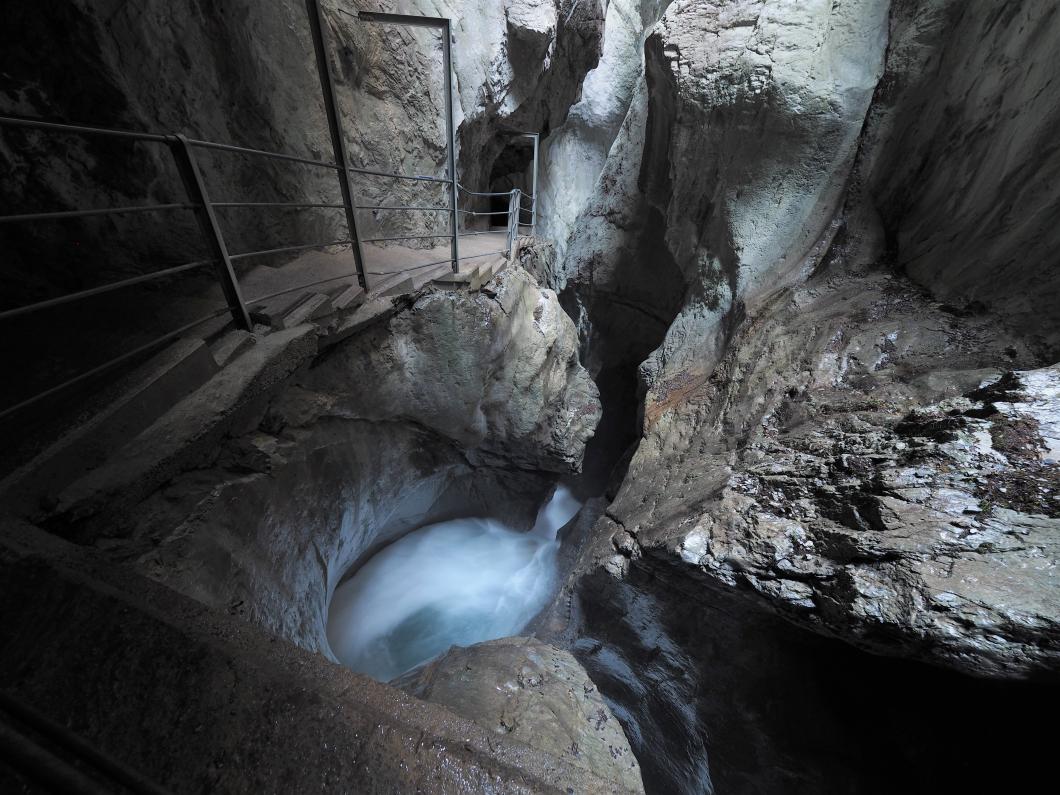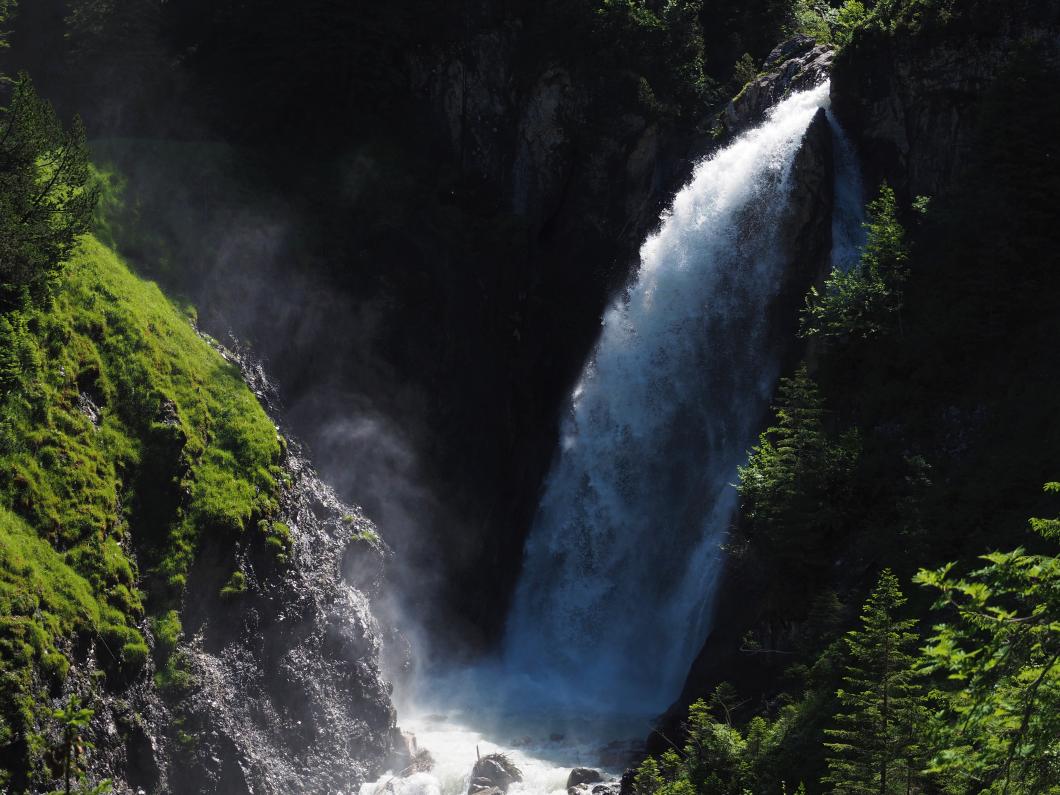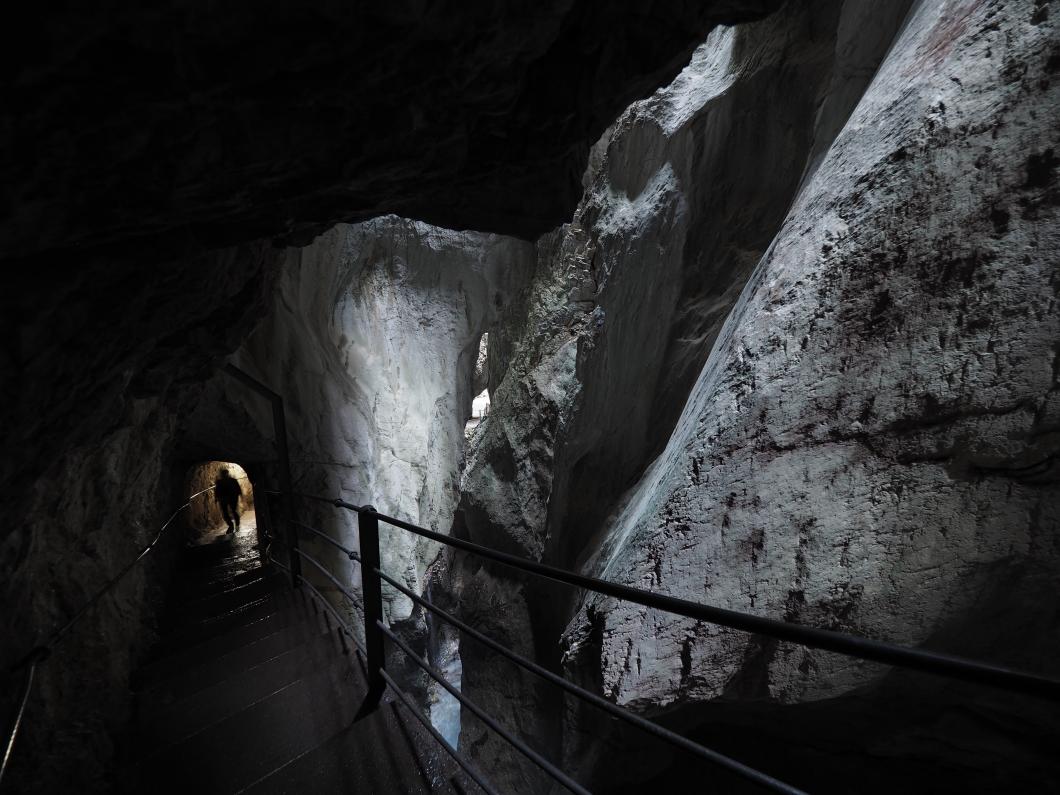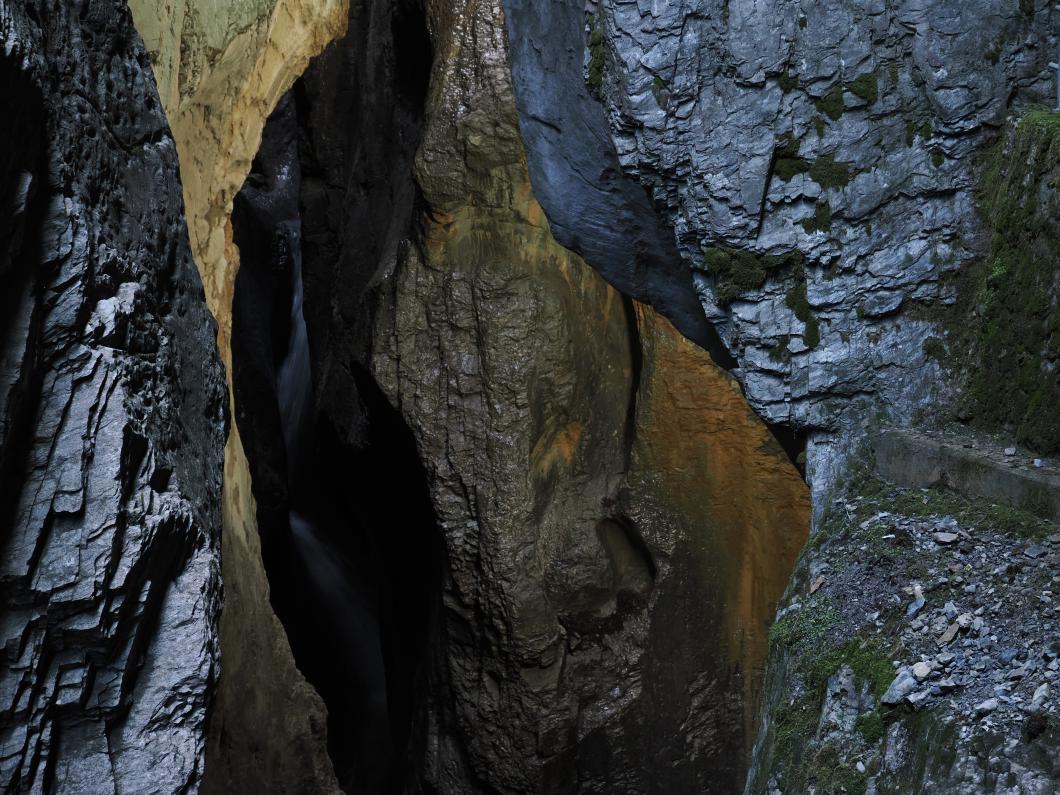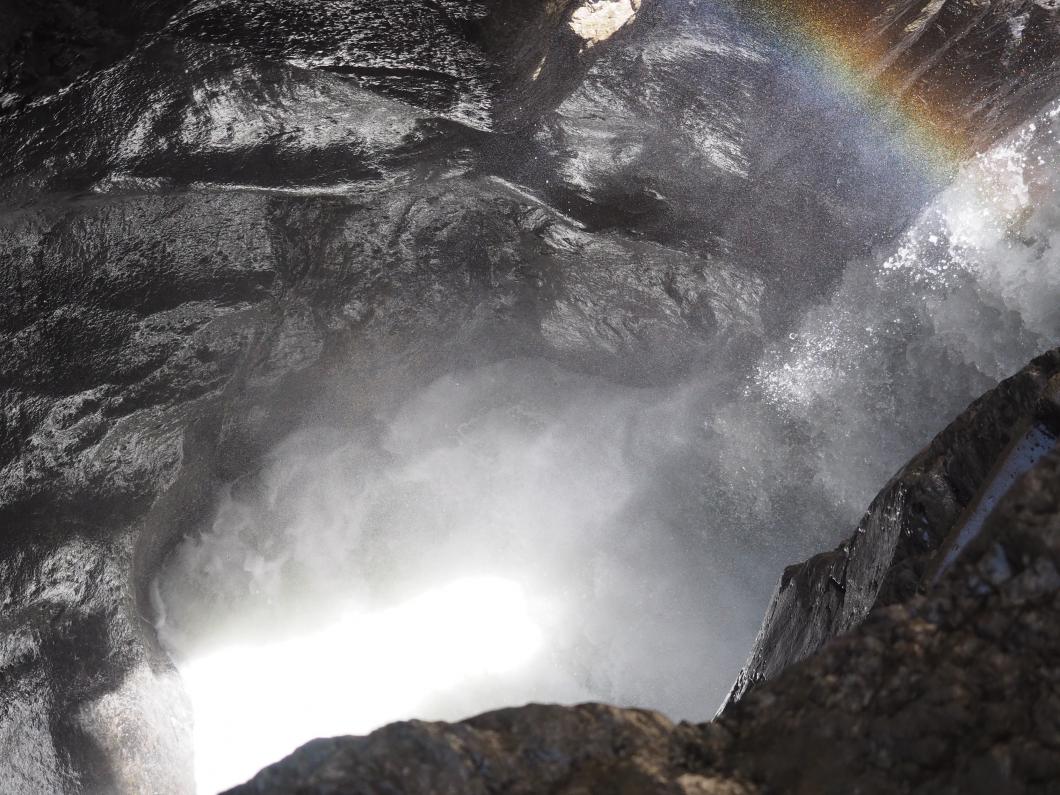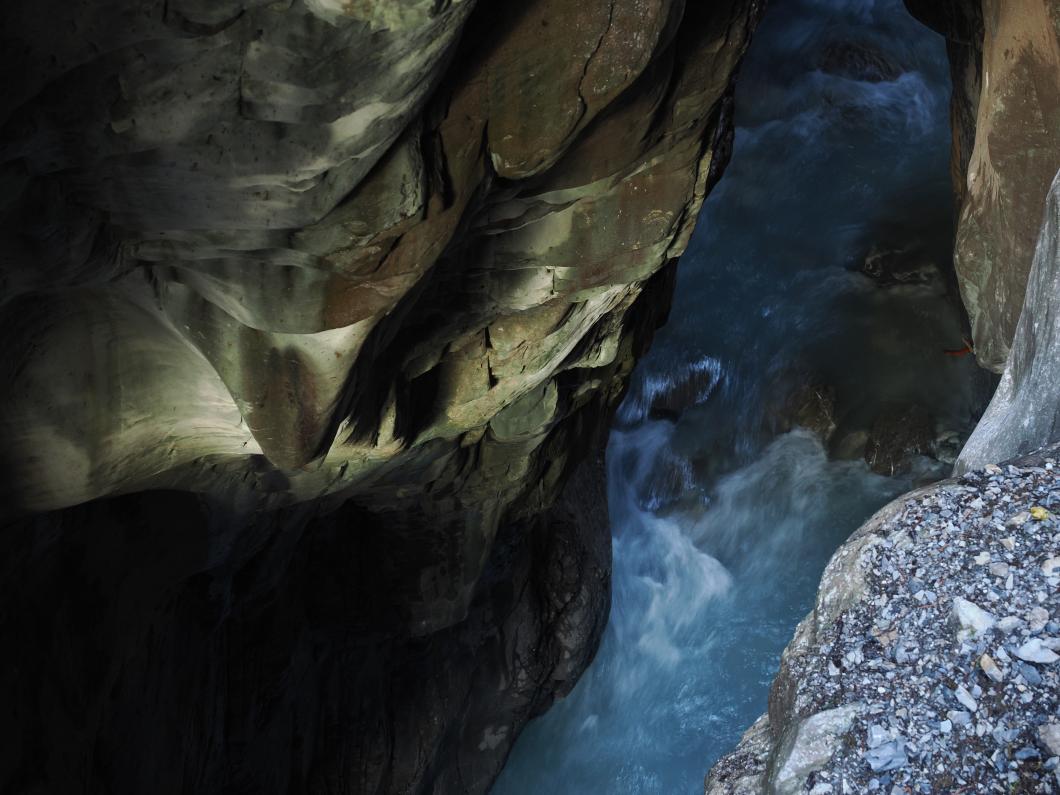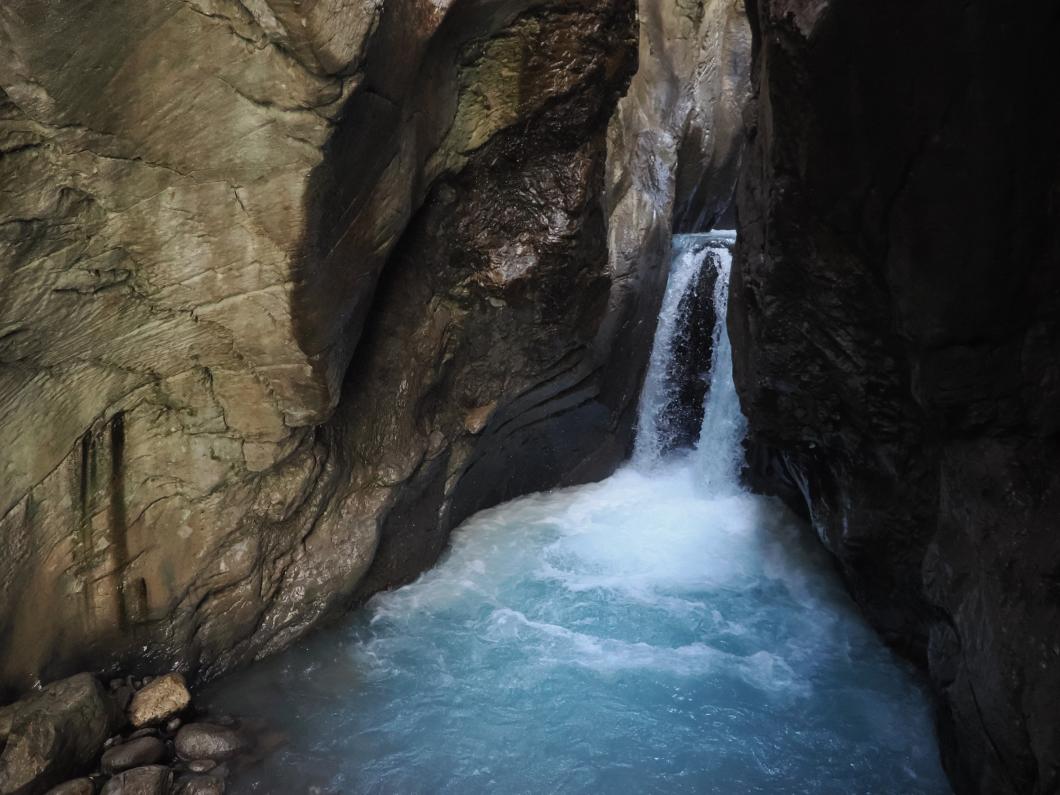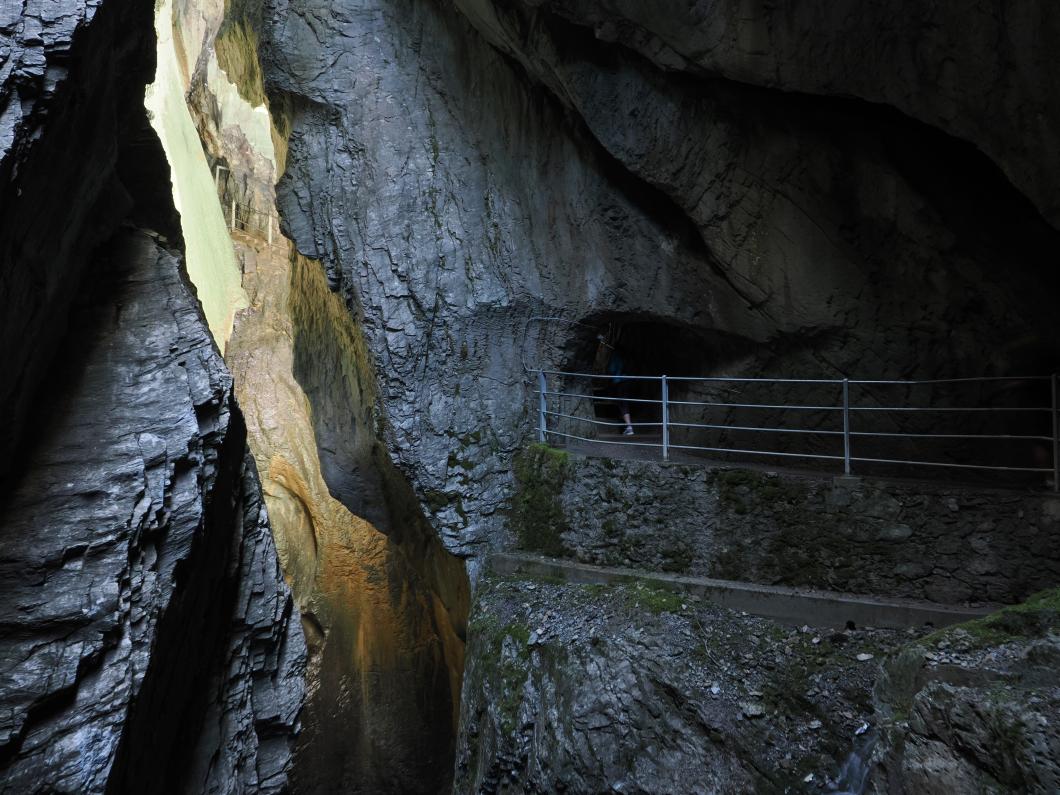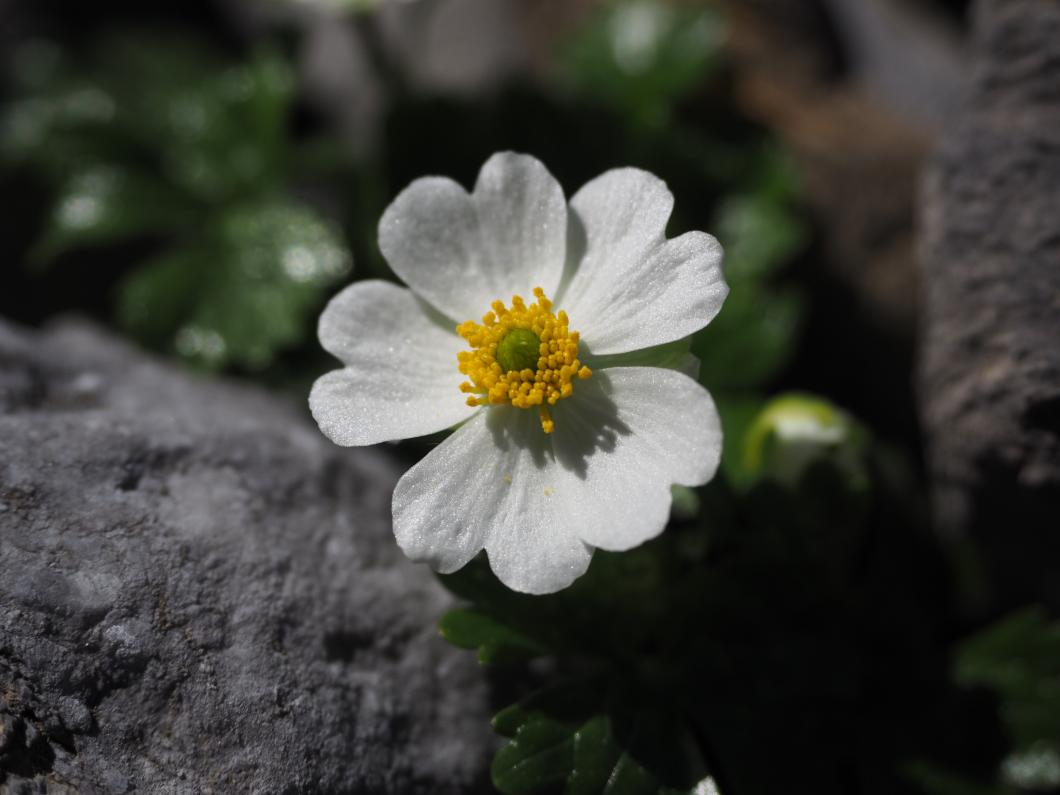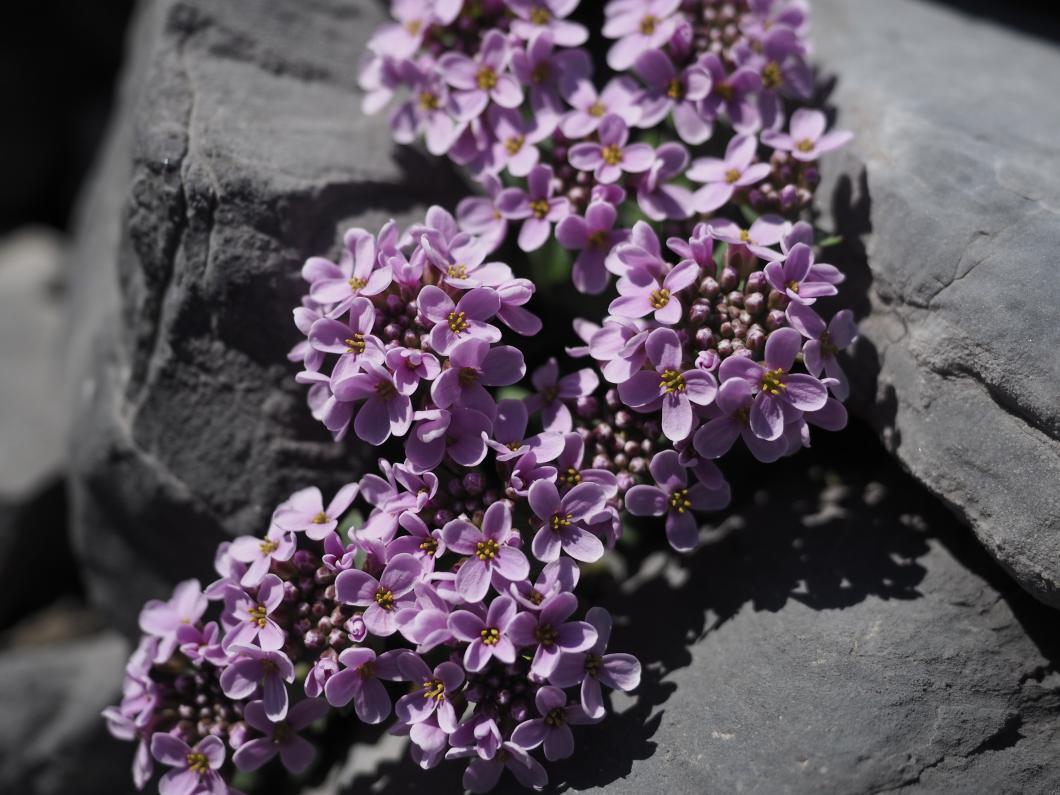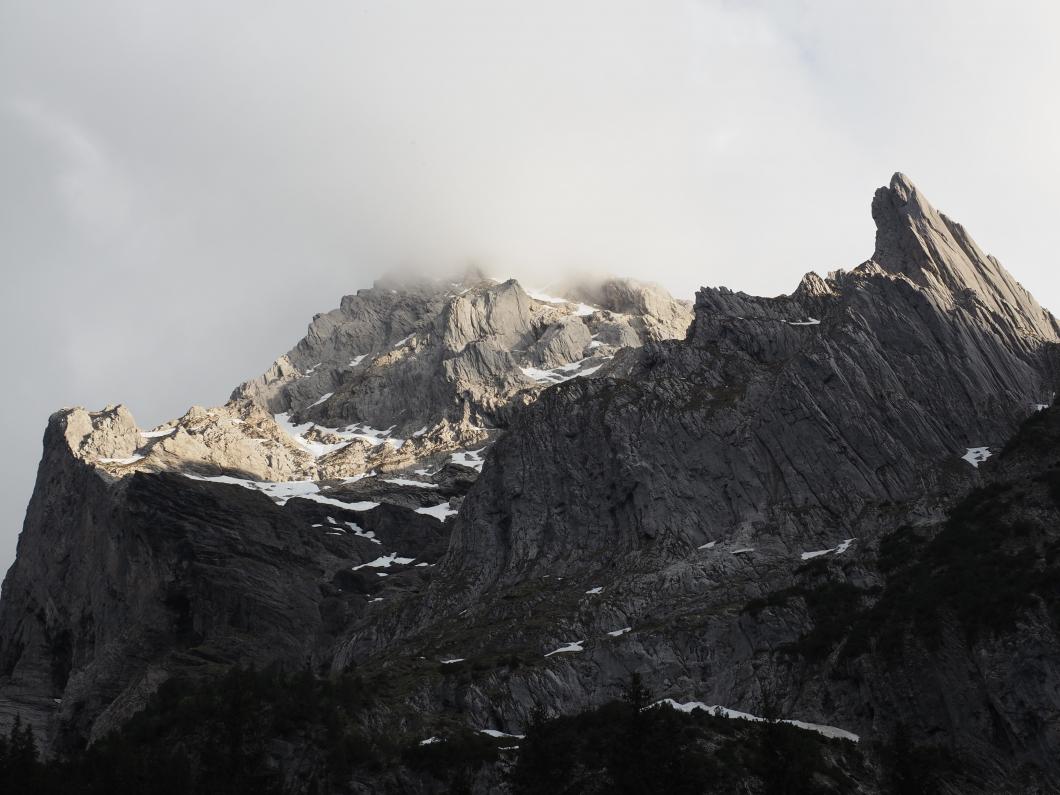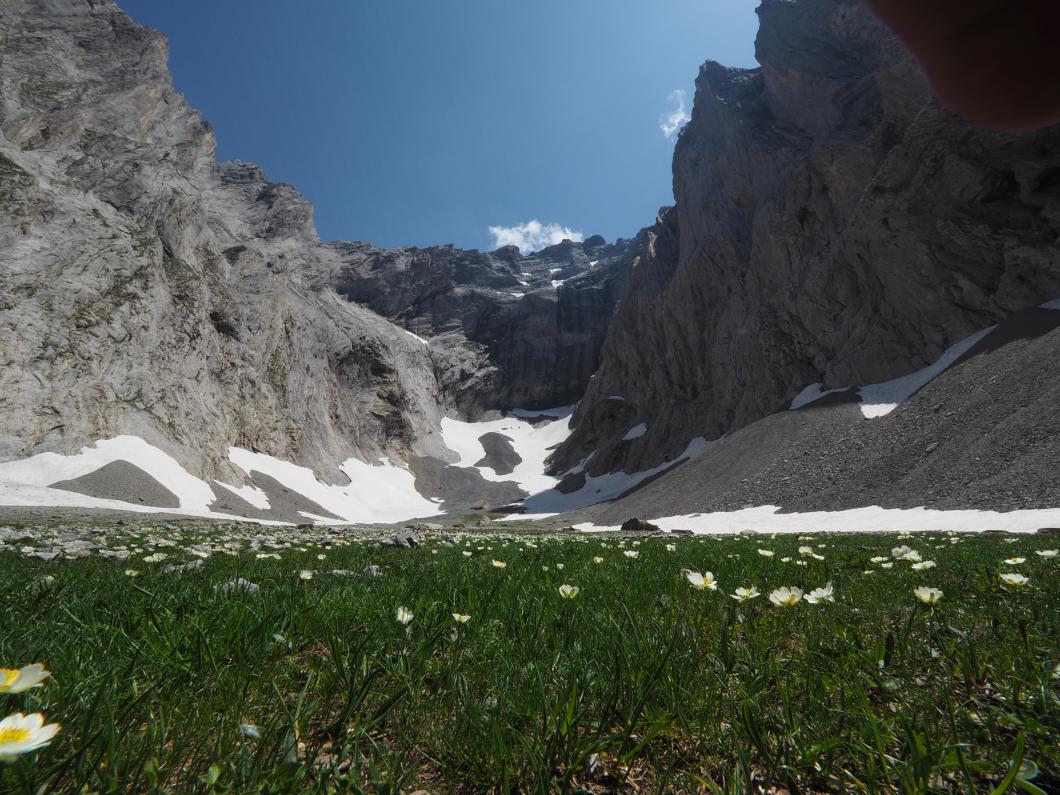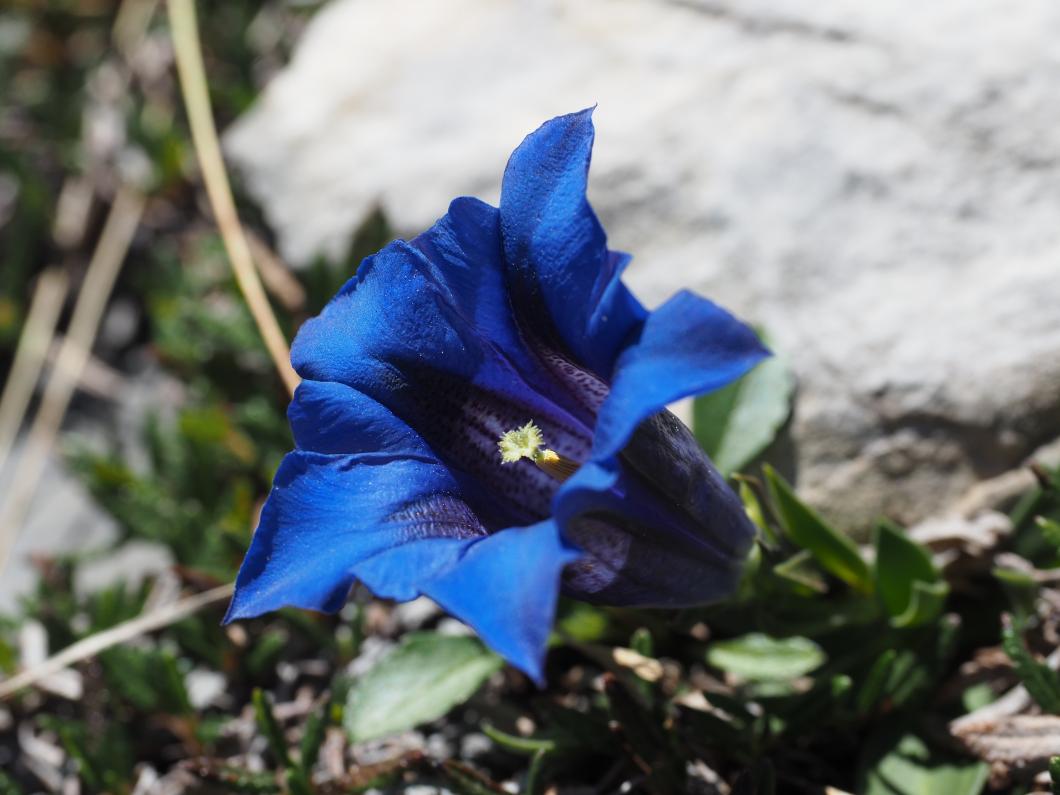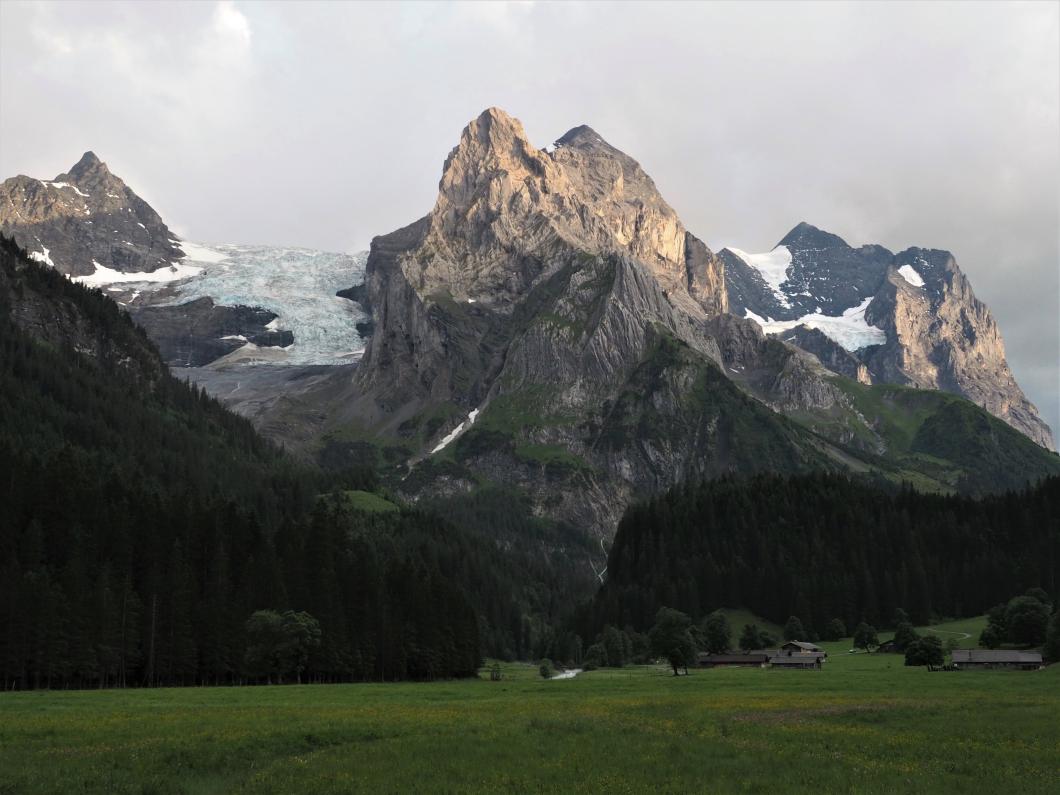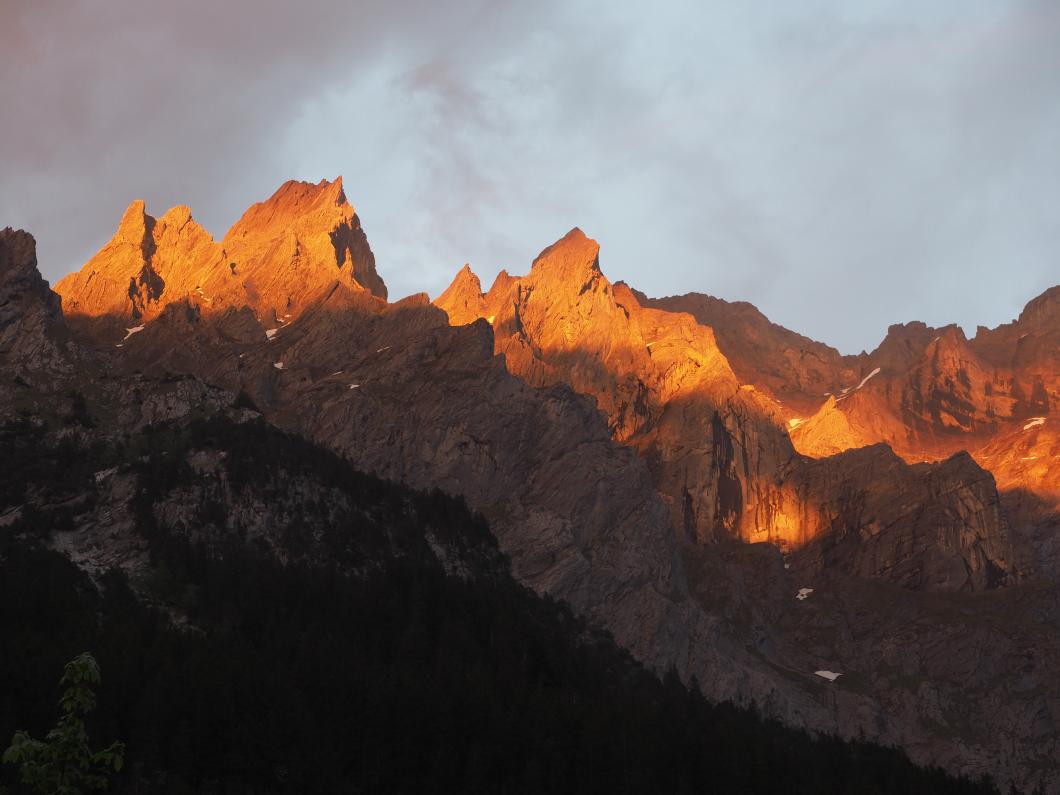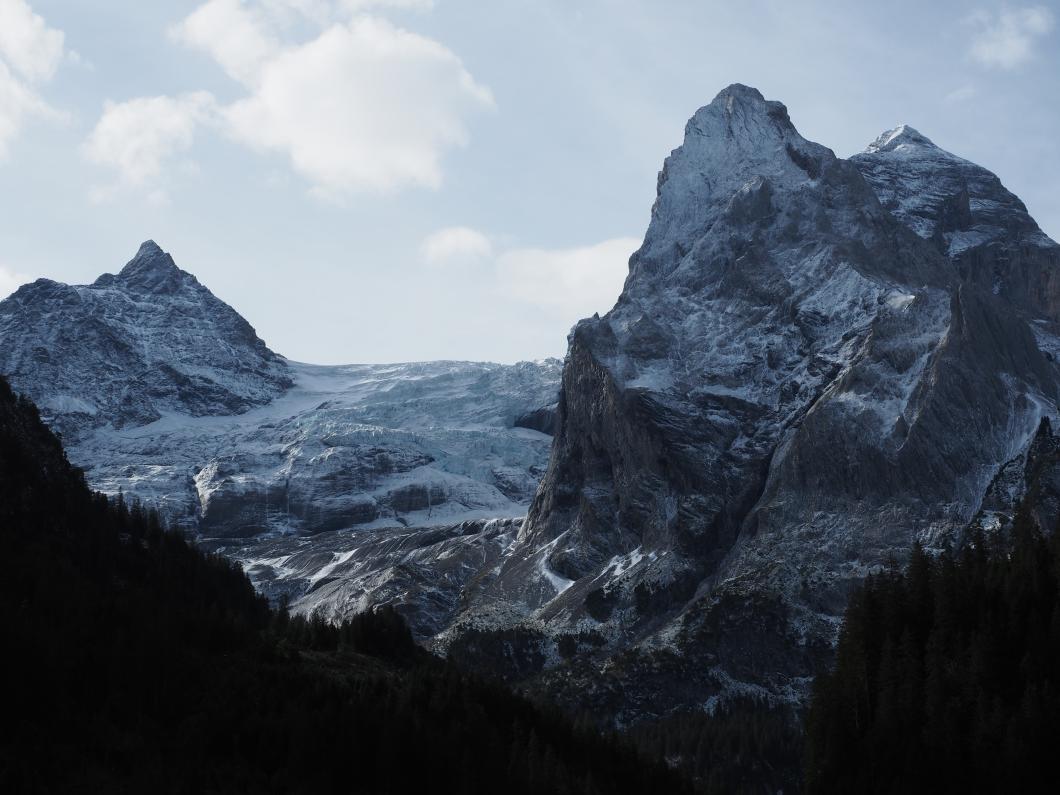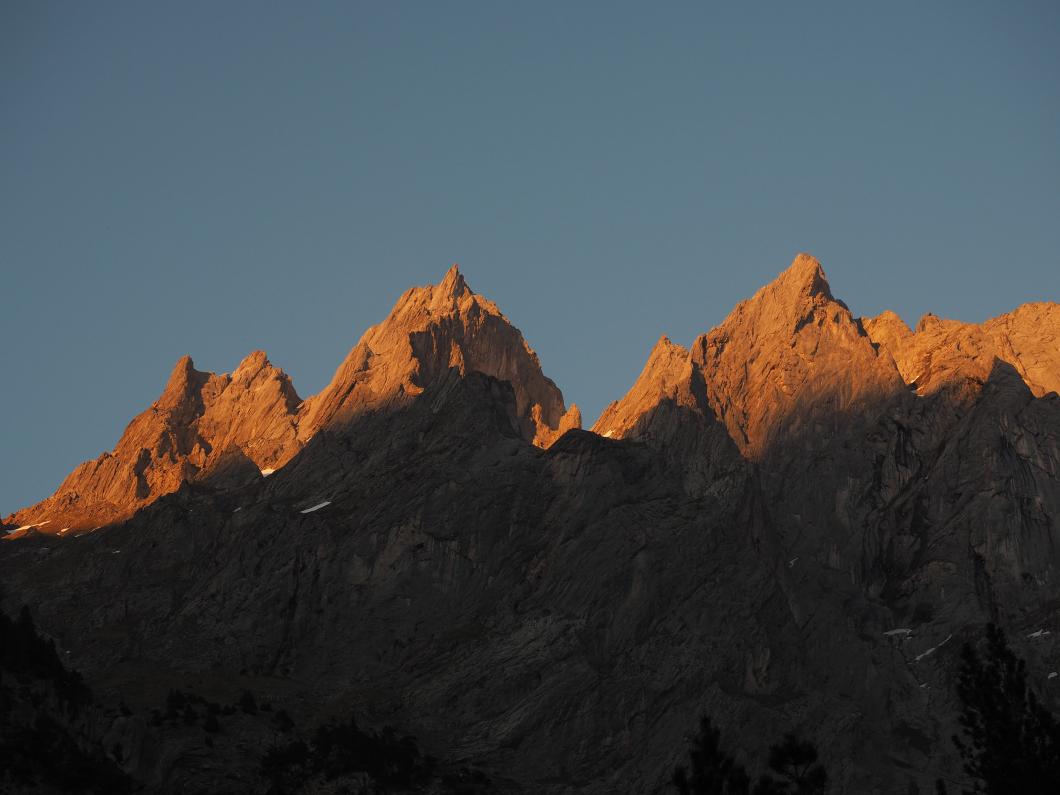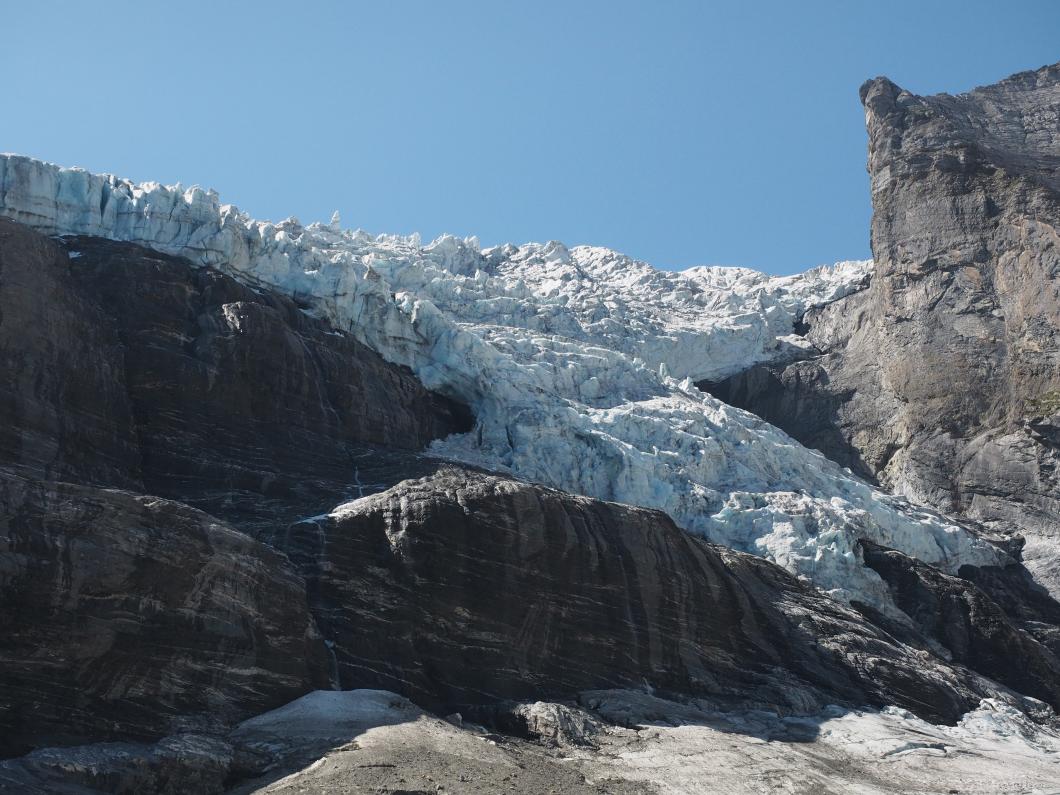Rosenlaui Glacier Gorge Tour
Discover on your own or join a guided tour
On a well-secured path, you hike past mighty waterfalls, romantic grottos and bizarre rock formations. The unbridled energy of the glacier water is constantly palpable: sometimes it swirls around a glacier pot, sometimes it falls over a rock step, squeezes through a bottleneck, foams, bubbles and gurgles. Powerful, breathtaking, refreshing.
The gorge is visited on the ascent, the path leads through a primeval mountain forest back to the ticket office and the Schluchthüttli café. The tour takes around 45 minutes and is suitable for walkers of all ages.
The gorge can easily be explored on your own. However, we will be happy to guide you through the gorge by appointment and tell you interesting facts, surprises and stories.
The gorge is visited on the ascent, the path leads through a primeval mountain forest back to the ticket office and the Schluchthüttli café. The tour takes around 45 minutes and is suitable for walkers of all ages.
The gorge can easily be explored on your own. However, we will be happy to guide you through the gorge by appointment and tell you interesting facts, surprises and stories.
In the midst of a magnificent mountain world
Arrive and discover
Lush alpine meadows, rugged rocky peaks, sparkling glaciers, thundering waterfalls: the Rosenlaui Glacier Gorge is located in the Swiss Alps Jungfrau-Aletsch UNESCO World Heritage Site and is surrounded by magnificent mountain scenery.
It's worth staying longer in the valley. Combine a visit to the gorge with a beautiful hike, refreshments in a cozy restaurant, an adventurous post bus ride, a trip on the nostalgic Reichenbach Falls Railway or a visit to the historic Schwarzwaldalp sawmill.
It's worth staying longer in the valley. Combine a visit to the gorge with a beautiful hike, refreshments in a cozy restaurant, an adventurous post bus ride, a trip on the nostalgic Reichenbach Falls Railway or a visit to the historic Schwarzwaldalp sawmill.
History
Development of the gorge
The Rosenlaui Glacier Gorge is already mentioned in travel handbooks of the 19th century. At that time, however, only a wooden staircase led down into the depths and gave daring travelers a small glimpse into the interior of the gorge.
In the summer of 1901, the hotelier Kaspar Brog from Meiringen buys the Rosenlaui property and immediately decides to open up the upper part of the wild gorge. On October 28, 1901, construction work begins. The contractor is the Tyrolean Johann Berti. The development turns out to be more difficult than expected and the construction work drags on well into the summer of 1902. The path has to be blasted continuously into the solid limestone rock. 9000 shots or 180 packages of dynamite are needed for this. The costs amount to 22,000 francs.
In the summer of 1901, the hotelier Kaspar Brog from Meiringen buys the Rosenlaui property and immediately decides to open up the upper part of the wild gorge. On October 28, 1901, construction work begins. The contractor is the Tyrolean Johann Berti. The development turns out to be more difficult than expected and the construction work drags on well into the summer of 1902. The path has to be blasted continuously into the solid limestone rock. 9000 shots or 180 packages of dynamite are needed for this. The costs amount to 22,000 francs.
Opening and expansion
The Rosenlaui Glacier Gorge is opened on June 6, 1903. On this day, 38 people visit the gorge and the entrance fee is one franc.
In the winter of 1930/31, Kaspar Brog's descendants had the gorge path extended to its current length. Since then, the route through the gorge has only been gently renovated and adapted to today's safety standards. In recent years, the two longest tunnels have been equipped with a solar lighting system.
The Rosenlaui Glacier Gorge is inspected every spring before opening by a local company specializing in rock safety and prepared for summer operation.
Today, the Rosenlaui Glacier Gorge is run by Theres Anderegg and Urs Moor. As the great-great-granddaughter, Theres Anderegg belongs to the 5th generation of Kaspar Brog's descendants.
In the winter of 1930/31, Kaspar Brog's descendants had the gorge path extended to its current length. Since then, the route through the gorge has only been gently renovated and adapted to today's safety standards. In recent years, the two longest tunnels have been equipped with a solar lighting system.
The Rosenlaui Glacier Gorge is inspected every spring before opening by a local company specializing in rock safety and prepared for summer operation.
Today, the Rosenlaui Glacier Gorge is run by Theres Anderegg and Urs Moor. As the great-great-granddaughter, Theres Anderegg belongs to the 5th generation of Kaspar Brog's descendants.
Healing spring and hotel
In 1771, local resident Andreas von Bergen discovered a healing spring in Rosenlaui. He then bought the Rosenlaui Alp and built a bathing hut and a simple dwelling. In the first half of the 19th century, the Rosenlaui baths experienced a heyday. It enjoyed a good reputation and was very popular. Despite this, the business became increasingly more important than the baths. In 1912, nature put an end to the baths: earth movements almost completely buried the sulphur spring.
Today, the romantic Hotel Rosenlaui is run by the second and third generation of the Kehrli family.
Today, the romantic Hotel Rosenlaui is run by the second and third generation of the Kehrli family.




